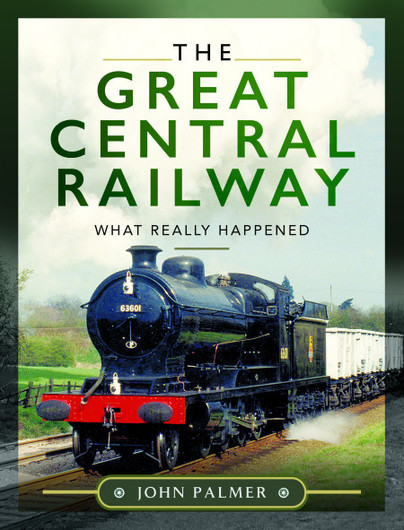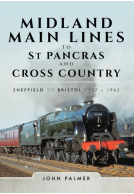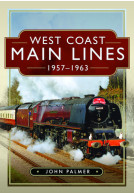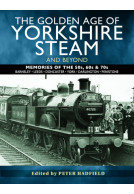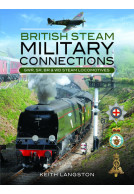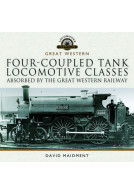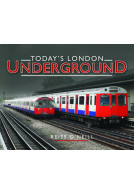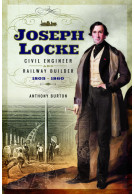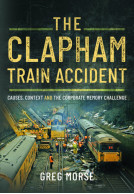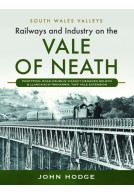The Great Central Railway (Hardback)
What Really Happened
Imprint: Pen & Sword Transport
Pages: 344
Illustrations: 150 colour & black and white illustrations & maps
ISBN: 9781526777898
Published: 18th November 2020
WINNER
Railway and Canal Historical Society Book Awards 2022, awarded Railway Book of the Year and Transport History Book of the Year.
(click here for international delivery rates)
Order within the next 3 hours, 47 minutes to get your order processed the next working day!
Need a currency converter? Check XE.com for live rates
| Other formats available - Buy the Hardback and get the eBook for £1.99! | Price |
|---|---|
| The Great Central Railway eBook (39.1 MB) Add to Basket | £19.99 |
For generations of railway enthusiasts and more latterly for social historians, the life and times of the former Great Central Railway and in particular its extension towards London in the 1890s and closure seventy years later, have generated considerable interest and controversy.
Although many books have been written about the Railway, the majority in recent times have concentrated upon providing a photographic record and a nostalgic look in retrospect to what was generally perceived as happier times for the route.
None of the books have presented the outcome from thorough research into the business aspects of the Railway and its successive private (L N E R) and public ( B R ) ownerships through war and peace, times of industrial, social and political change, that influenced and shaped the demand for a railway service.
While retaining a strong railway theme throughout, the book identifies the role played by successive governments , the electricity and coal industries and the effect of social change that, together resulted in a case for closure.
The content of the book replaces much supposition with fact and places on record what really happened.
The final part of the book acknowledges the fine work over half a century of volunteers dedicated to saving a section of the line in Leicestershire.
In summary, the book offers an incredible reference source for any GCR enthusiast or for anyone with an interest in transport history offering a unique blend of research and nostalgia. The book covers the railway from its earliest days and works right through to the incredible work and dedication carried out by volunteers in order to save part of the line in Leicester.
Rail Advent
Read the full review here
An interesting and valuable change from the nostalgia volumes that make up so much railway publishing. The author’s work began as a personal project to answer questions about the Great Central in British Railways days but became a business history using records that seem to have been little used by others.
Roger Backhouse, The Journal of the Friends of the National Railway Museum Spring 2021
Chapters about the history of the Great Central from its Manchester, Sheffield and Lincolnshire days make clear that the Great Central was a progressive company investing wisely, apart from the London extension. There is a detailed look at the GCR’s capital structure, a subject neglected in railway histories.
The GCR, Great Eastern and Great Northern planned amalgamation but this was turned down by Parliament to be revived at the 1923 Grouping. The LNER was over capitalized and highly geared financially and the author assesses operating costs and income in the context of changing legislation and new forms of transport.
It is good to see detail of how railways fitted with the other nationalised industries of the 1950s, notably the Coal Board and Central Electricity Generating Board. British Railways underpriced their coal traffic, and several factors changed the long haul coal market. These included concentration on fewer larger pits, the Clean Air Act reducing coal use in London, nuclear power stations and the development of the Super Grid with larger power stations notably in the Trent Valley. Though the GC route had value for diversions during LMR electrification these changes reduced the value of the London Extension for freight making closure almost inevitable.
Fish traffic from Grimsby was significant, though largely lost after the 1955 ASLEF strike but the important parcels traffic gets little attention in the book, perhaps it was easier to divert to other routes. The effects of Ernie Marples and the Beeching Plan are well covered. Looking back it is hard to understand why such a character as Marples became a Minister. But Beeching ensured better understanding of costs.
This book is a brave effort at a business history but perhaps some judicious could have given better focus. Overall, it is a good addition to railway histories using sources other rail historians could usefully follow.
This is a very well produced book which will appeal to those who want to know more than the mechanical nuts and bolts of the Great Central Railway as well as a wider audience who want to know more about the business side of railway promotion and operation.
Great North of Scotland Railway, Great North of Scotland Railway Society and Highland Railway Ass.
"Recommended".
Journal of the Railway & Canal Historical Society
This is a weighty book with some photographs and maps but mostly text. It is a valuable addition to the social and political history of railways.
The Railway Correspondence and Travel Society, The Railway Observer, April 2021
Book Of The Month
Steam World, March 2021
The final words go to GC Railway Society President Adrian Shooter, who as the boss of Chiltern Railways successfully operated the surviving southern section of the route into Marylebone: “This book an erudite piece of work is very readable. I found the manuscript very difficult to put down.” So will you.
Review by Roger Backhouse
York Model Engineers newsletter
... overall, it is a good addition to railway histories using sources other rail historians could usefully follow.
About John Palmer
John Palmer was born in 1948 and became a member of an extended family of railwaymen. Home was in the railway town of Derby, close to the Midland main line and the Great Northern line to Nottingham Victoria, employment within the railway industry naturally followed and John entered service in the department of the chief mechanical and electrical engineer. Shortly afterwards he was selected for a management training scheme, a career of 33 years in contract and project management work in the U K and overseas was enjoyed and also allowed ample opportunity to pursue his own natural interest in all things railway.







